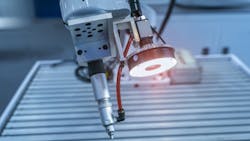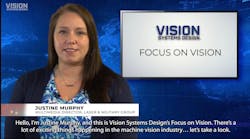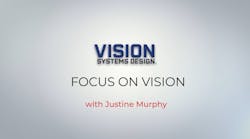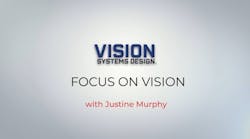Whether the environment is indoors or outdoors, lighting is a crucial component of machine vision applications. Illumination helps create contrast in an image, which is necessary to highlight areas of interest within that image.
There are many approaches to illuminating a scene, and deciding which one you should use depends on the specific machine vision application.
For example, Gloria Ferrer Caves & Vineyards (Los Carneros, CA, USA) used active lighting when it implemented an AI-enabled machine vision system to track grapes during the growing season. The goal was to automate crop estimation by gathering and analyzing ongoing information about the crops as they mature. To accomplish this, the vineyard’s team purchased a specially designed stereo vision camera system. After mounting it on a vehicle, the camera system snaps images as the vehicle moves up and down the rows of crops. It includes 12 LED lights that flash with every shot—no matter how much ambient light is available in the environment.
This uniform approach to lighting helps ensure that the vineyard’s managers will get images that are consistent over time, allowing for comparative analysis of the grapes and vines.
Related: Machine Vision System Tracks Vineyard's Crop Yields
Deploying Machine Vision Lighting Indoors
Lighting is equally important indoors. TireTech (Frieberg, Germany) chose 3D triangulation to capture images of tires moving via conveyors through an automated system to inspect and sort used automobile tires. Once inside a steel enclosure, 3D triangulation cameras, which are equipped with a sensor and laser, scan a tire at high speed as it is rotated, creating a 3D image of the tire.
“The only source of light comes from the cameras, which project a laser line onto the tires, which are then measured by the camera,” Marcel Staudinger, TireTech project manager, explains.
Related: German Company Develops AI-Enabled Tire Inspection System
Meanwhile, Ziemann & Urban (Moosinning, Germany) developed an automated system to provide precise measurements of disposable plastic pipette tips, which are used in laboratory testing procedures. The system, which is also inside an enclosure, relies on telecentric illumination, deploying telecentric lenses combined with telecentric backlights, LEDs and a green ring light. This technique tends to produce high contrast silhouettes, enabling measurement precision.
Related: The HEKUtip QC Assistant Delivers Precise Measurements
As these examples demonstrate, lighting is an important facet of machine vision applications, and it should be addressed early in the design process.
As Lindsey Sullivan, technical marketing manager at CCS America, explains, “Once the required lighting is understood, the design of the inspection system can account for the positioning of the sample, size, working distance, color (and) geometry of the light.”






